**Thank you to all you have commented or emailed me with resources, books and articles to add to this list!**
As a number of scholars have noted, there is comparatively less scholarship about the Houston compared to other U.S. cities of its size and significance, particularly when it comes to contemporary research (as I’ve come to see there is quite a wealth of historical work that’s been done). Anyway, given that I’m working on research down here, I’ve been collecting whatever I can find about Houston politics, history, and culture. I wanted to share what I’m finding with you so that others also access all these resources in one spot, and in the hopes that others might be able to add to this list. I’ll try to include a blurb about all of the books (not articles though). Feel free to get in touch with me if you know of other things to add to this list. I’ll treat this as a living document and continue to add things to it, so continue to check back!
Books:
 Bazaldua, M. (2007). Thanks to Prison: Operation State Boots to Gucci Boots. Houston: Maroon Publishing.
Bazaldua, M. (2007). Thanks to Prison: Operation State Boots to Gucci Boots. Houston: Maroon Publishing.
Autobiographical story of Bazaldua, who grew up in Houston, and his experiences in the criminal justice system and beyond.
Beeth, H. and C.D. Wintz. (1992). Black Dixie: Afro-Texan History and Culture in Houston. College Station, TX: Texas A & M University Press.
An innovative contribution to the growing body of research about urban African-American culture in the South, Black Dixie is the first anthology to track the black experience in a single southern city across the entire slavery/post-slavery continuum. It combines the best previously published scholarship about black Houston and little-known contemporary eyewitness accounts of the city with fresh, unpublished essays by historians and social scientists.
Divided into four sections, the book covers a broad range of both time and subjects. The first section analyzes the development of scholarly consciousness and interest in the history of black Houston; slavery in nineteenth-century Houston is covered in the second section; economic and social development in Houston in the era of segregation are looked at in the third section; and segregation, violence, and civil rights in twentieth-century Houston are dealt with in the final section.
Beste, P., L.S. Walker, J. Kugelberg, Bun B. (2013). Houston Rap. New York: Sinecure.
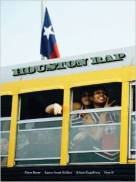 “The Houston, Texas Neighborhoods of Fifth Ward, Third Ward, and South Park have grown to be hallowed ground for modern rap culture, possessing self-contained celebrities, entrepreneurs, support networks, and a micro-economy of their own…Photographer Peter Beste and writer Lance Scott Walker spent nine years documenting the most influential style in 21st century hip-hop and the vibrant inner city culture from which it stems… Houston Rap, edited by Johan Kugelberg, profiles noted artists such as Bun B of UGK, Z-Ro, Big Mike, K-Rino, Willie D of the Geto Boys, Lil’ Troy, and Paul Wall, alongside reflections of the lives of departed legends such as DJ Screw, Pimp C, and Big Hawk.”
“The Houston, Texas Neighborhoods of Fifth Ward, Third Ward, and South Park have grown to be hallowed ground for modern rap culture, possessing self-contained celebrities, entrepreneurs, support networks, and a micro-economy of their own…Photographer Peter Beste and writer Lance Scott Walker spent nine years documenting the most influential style in 21st century hip-hop and the vibrant inner city culture from which it stems… Houston Rap, edited by Johan Kugelberg, profiles noted artists such as Bun B of UGK, Z-Ro, Big Mike, K-Rino, Willie D of the Geto Boys, Lil’ Troy, and Paul Wall, alongside reflections of the lives of departed legends such as DJ Screw, Pimp C, and Big Hawk.”
 Walker, Lance Scott, Johan Kugelberg, Michael Daley, Peter Beste, and Willie D. (2013). Houston Rap Tapes. Los Angeles, CA: Sinecure Books.
Walker, Lance Scott, Johan Kugelberg, Michael Daley, Peter Beste, and Willie D. (2013). Houston Rap Tapes. Los Angeles, CA: Sinecure Books.
Houston Rap Tapes is the companion to Houston Rap, Peter Beste’s intimate photo book on this important hip hop culture.Houston Rap Tapes complements Beste’s photography with a series of oral histories conducted by writer Lance Scott Walker. The book features exclusive interviews with legendary producers and MCs such as Bun B, Willie D, Paul Wall, Z-Ro, Big Mike, DJ DMD, K-Rino, Salih Williams and Lil’ Troy, alongside stories from old school masters like MC Wickett Crickett and Rick Royal. The life stories of the Houston rap scene are also represented by an assortment of radio and club personalities, impresarios, ex-pimps, former drug dealers and members of the community. Lance Scott Walker and Peter Beste spent nine years documenting the most influential style in twenty-first-century hip hop and the vibrant inner-city culture from which it stems.

Bullard, R. (1987). Invisible Houston: The Black Experience in Boom and Bust. College Station: Texas A&M University Press.
In this book, Robert Bullard, when of the foremost scholars of environmental racism, “systematically explores the demographic, social, economic, and political factors that helped make Houston the “golden buckle” of the Sunbelt. He then chronicles the rise of Houston’s black neighborhoods, the first of these being the settlement of emancipated slaves in Freedmen’s Town, an area which is the site of the present-day Forth Ward. Bullard analyzes the boom era of the 1970s and the dwindling economy and government commitment to affirmative action in the 1980s. Using case studies conducted in Houston’s Third Ward, the city’s most diverse black neighborhood and a microcosm of the larger black Houston community, he presents data on and discusses housing patterns, discrimination, pollution, law enforcement, and leadership, relating these issues to the larger ones of institutional racism, poverty, and politics.” Still so relevant to Houston today.
Center for Land Use Interpretation in Houston. (2009). On the Banks of Bayou City. Blaffer Gallery, Art Museum of the University of Houston.
Since 1994, The Center for Land Use Interpretation (CLUI)–a research organization based in Culver City, California–has studied the U.S. landscape, using multidisciplinary research, information processing and interpretive tools to stimulate thought and discussion around contemporary land-use issues. During a residency at the University of Houston Cynthia Woods Mitchell Center for the Arts, the CLUI established a field station on the banks of the Buffalo Bayou, revealing aspects of the relationship between oil and the landscape in Houston that are often overlooked–even by the city’s residents. The CLUI’s findings are presented in this volume and a concurrent exhibition at the Blaffer Gallery, titled Texas Oil: Landscape of an Industry. The book documents the CLUI’s methodology in a series of interviews and includes a photographic essay on land use in Houston featuring a panoramic, foldout section and a comprehensive chronology of the CLUI’s projects and publications over the past 14 years.
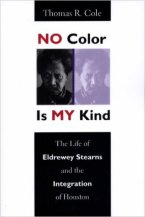 Cole, Thomas R. (1997). No Color Is My Kind: The Life of Eldrewey Stearns and the Integration of Houston. Austin, TX: University of Texas Press.
Cole, Thomas R. (1997). No Color Is My Kind: The Life of Eldrewey Stearns and the Integration of Houston. Austin, TX: University of Texas Press.
“No Color Is My Kind is an uncommon chronicle of identity, fate, and compassion as two men—one Jewish and one African American—set out to rediscover a life lost to manic depression and alcoholism. In 1984, Thomas Cole discovered Eldrewey Stearns in a Galveston psychiatric hospital. Stearns, a fifty-two-year-old black man, complained that although he felt very important, no one understood him. Over the course of the next decade, Cole and Stearns, in a tumultuous and often painful collaboration, recovered Stearns’ life before his slide into madness—as a young boy in Galveston and San Augustine and as a civil rights leader and lawyer who sparked Houston’s desegregation movement between 1959 and 1963.
While other southern cities rocked with violence, Houston integrated its public accommodations peacefully. In these pages appear figures such as Thurgood Marshall, Martin Luther King, Jr., Leon Jaworski, and Dan Rather, all of whom—along with Stearns—maneuvered and conspired to integrate the city quickly and calmly. Weaving the tragic story of a charismatic and deeply troubled leader into the record of a major historic event, Cole also explores his emotionally charged collaboration with Stearns. Their poignant relationship sheds powerful and healing light on contemporary race relations in America, and especially on issues of power, authority, and mental illness.
 De León, Arnoldo (2001). Ethnicity in the Sunbelt: Mexican Americans in Houston. Houston, Texas: University of Houston, Center for Mexican American Studies.
De León, Arnoldo (2001). Ethnicity in the Sunbelt: Mexican Americans in Houston. Houston, Texas: University of Houston, Center for Mexican American Studies.
A century after the first wave of Hispanic settlement in Houston, the city has come to be known as the “Hispanic mecca of Texas.” Arnoldo De León’s classic study of Hispanic Houston, now updated to cover recent developments and encompass a decade of additional scholarship, showcases the urban experience for Sunbelt Mexican Americans.
De León focuses on the development of the barrios in Texas’ largest city from the 1920s to the present. Following the generational model, he explores issues of acculturation and identity formation across political and social eras. This contribution to community studies, urban history, and ethnic studies was originally published in 1989 by the Center for Mexican American Studies at the University of Houston. With the Center’s cooperation, it is now available again for a new generation of scholars.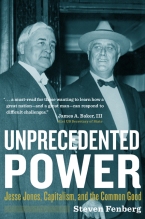
Fenberg, S. (2013). Unprecedented Power: Jesse Jones, Capitalism, and the Common Good. College Station, Texas: Texas A&M University Press.
“Unprecedented Power shows how Jesse Jones and the Reconstruction Finance Corporation restored the economy during the Great Depression, built massive, cutting-edge industries in time for the Allied Forces to fight and win World War II and made money for the federal government at the same time. No wonder Kirkus Reviews said Unprecedented Power “holds enormous relevance today.” Next to President Roosevelt, Jesse Jones was considered to be the most powerful person in the nation throughout the Great Depression and World War II. Largely forgotten today, he helped define Franklin Roosevelt’s presidency as one that in many instances provided positive, profound and enduring results for the nation in a financially astute and responsible manner. Jesse Jones’s successful efforts and methods to preserve capitalism and democracy during two of the most tumultuous and dangerous periods in United States history deserve attention today. According to author Steven Fenberg, Jones understood he would prosper only if his community thrived, a belief that directed him to combine capitalism and public service to develop his hometown of Houston, to rescue his country and to save nations. As we grapple with the role of government, unemployment, financial insecurity for many, crumbling infrastructure and reliance on other nations for vital resources, Unprecedented Power offers models for today by looking at successes from the past.”
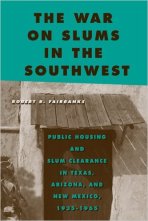
Fairbanks, R.B. (2014). The War on Slums in the Southwest: Public Housing and Slum Clearance in Texas, Arizona, and New Mexico, 1935-1965. Philadelphia, PA: Temple University Press.
In The War on Slums in the Southwest, Robert Fairbanks provides compelling and probing case studies of economic problems and public housing plights in Albuquerque, Dallas, Houston, Phoenix and San Antonio. He provides brief histories of each city–all of which expanded dynamically between 1935 and 1965–and how they responded to slums under the Housing Acts of 1937, 1949, and 1954.
Despite being a region where conservative politics has ruled, these Southwestern cities often handled population growth, urban planning, and economic development in ways that closely followed the national account of efforts to eliminate slums and provide public housing for the needy. The War on Slums in the Southwest therefore corrects some misconceptions about the role of slum clearance and public housing in this region as Fairbanks integrates urban policy into the larger understanding of federal and state-based housing policies.
 Faniel, M.L. (2013). Hip-Hop in Houston: The Origin & The Legacy. Charleston: The History Press.
Faniel, M.L. (2013). Hip-Hop in Houston: The Origin & The Legacy. Charleston: The History Press.
“Rap-A-Lot Records, U.G.K (Pimp C and Bun B), Paul Wall, Beyonce, Chamillionaire and Scarface are all names synonymous with contemporary hip-hop. And they have one thing in common: Houston. Long before the country came to know the chopped and screwed style of rape from the Bayou Country in the late 1990s, hip-hop in Houston grew steadily and produced some of the most prolific independent artists in the industry. With early roots in jazz, blues, R&B and zydeco, Houston hip-hop evolved not only as a musical form but also as a cultural movement. Join Maco L. Faniel as he uncovers the early years of Houston hip-hop from the music to the culture it inspired.”

Feagin, J. (1998). Free Enterprise City. New Brunswick: Rutgers University Press.
“The mission of this book is to attack the idea that Houston is a conservative role model, a city that succeeds due to its boundless devotion to free enterprise….One thing Feagin does right: he points out that Houston is hardly a laissez-faire paradise, in that government has consistently subsidized its business elite through spending on roads, port facilities, convention centers, etc.”
—

Hyonchu Kwon, V. (1997). Entrepreneurship and Religion: Korean Immigrants in Houston, Texas.
Don’t know too much about this one…
Check back…Or better yet, maybe one of you can fill this in…
—
—
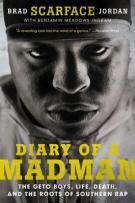 Jordan, Brad “Scarface” and Benjamin Meadows Ingram. (2015). Diary of a Madman: The Geto Boys, Life, Death, and the Roots of Southern Rap. New York: Harper Collins.
Jordan, Brad “Scarface” and Benjamin Meadows Ingram. (2015). Diary of a Madman: The Geto Boys, Life, Death, and the Roots of Southern Rap. New York: Harper Collins.
From Geto Boys legend and renowned storyteller Scarface, comes a passionate memoir about how hip-hop changed the life of a kid from the south side of Houston, and how he rose to the top-and ushered in a new generation of rap dominance. Scarface is the celebrated rapper whose hits include “On My Block,” “Mind Playing Tricks on Me” and “Damn It Feels Good to be a Gangsta” (made famous in the cult film Office Space). The former president of Def Jam South, he’s collaborated with everyone from Kanye West, Ice Cube and Nas, and had many solo hits such as “Guess Who’s Back” feat. Jay-Z and “Smile” feat. Tupac. But before that, he was a kid from Houston in love with rock-and-roll, listening to AC/DC and KISS.
In Diary of a Madman, Scarface shares how his world changed when he heard Run DMC for the first time; how he dropped out of school in the ninth grade and started selling crack; and how he began rapping as the new form of music made its way out of New York and across the country. It is the account of his rise to the heights of the rap world, as well as his battles with his own demons and depression. Passionately exploring and explaining the roots and influences of rap culture, Diary of a Madman is the story of hip-hop-the music, the business, the streets, and life on the south side Houston, Texas.
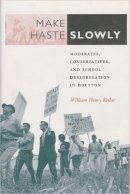 Kellar, William Henry. (1999). Make Haste Slowly: Moderates, Conservatives, and School Desegregation in Houston, Texas. College Station: Texas A&M University Press.
Kellar, William Henry. (1999). Make Haste Slowly: Moderates, Conservatives, and School Desegregation in Houston, Texas. College Station: Texas A&M University Press.
“In Make Haste Slowly, William Henry Kellar provides the first extensive examination of the development of Houston’s racially segregated public school system, the long fight for school desegregation, and the roles played by various community groups, including the HISD Board of Education, in one of the most significant stories of the civil rights era…Kellar shows that, while Houston desegregated its public school system peacefully, the limited integration that originally occurred served only to delay equal access to HISD schools. Houstonians shifted from a strategy “massive resistance” to one of “massive retreat.” White flight and resegregation transformed both the community and its public schools…Kellar concludes that forty years after the Brown decision, many of the aspirations that landmark ruling inspired have proven elusive, but the impact of the ruling on Houston has changed the face of that city and the nature of its public education dramatically and in unanticipated ways.”
Marquez, J.D. (2013). Black-Brown Solidarity: Racial Politics in the New Gulf South.Austin: University of Texas Press.
“Houston is the largest city in the Gulf South, a region sometimes referred to as the “black belt” because of its sizeable African American population. Yet, over the last thirty years, Latinos have become the largest ethnic minority in Houston, which is surpassed only by Los Angeles and New York in the number of Latino residents. Examining the history and effects of this phenomenon, Black-Brown Solidarity describes the outcomes of unexpected coalitions that have formed between the rapidly growing Latino populations and the long-held black enclaves in the region.
Together, minority residents have put the spotlight on prominent Old South issues such as racial profiling and police brutality. Expressions of solidarity, John D. Márquez argues, have manifested themselves in expressive forms such as hip-hop music, youth gang cultural traits, and the storytelling of ordinary residents in working-class communities. Contrary to a growing discourse regarding black-brown conflict across the United States, the blurring of racial boundaries reflects broader arguments regarding hybrid cultures that unsettle the orders established by centuries-old colonial formations. Accentuating what the author defines as a racial state of expendability—the lynchpin of vigilante violence and police brutality—the new hybridization has resulted in shared wariness of a linked fate.Black-Brown Solidarity also explores the ways in which the significance of African American history in the South has influenced the structures through which Latinos have endured and responded to expendability. Mining data from historical archives, oral histories, legal documents, popular media, and other sources, this work is a major contribution to urban studies, ethnic studies, and critical race theory.”
McComb, D.G. (1981). Houston: A History. Austin: University of Texas Press.
A bit old now, this is the second edition in which McComb examines “Houston politics, its economic and business growth, and the evolution of its social and cultural institutions. New Material traces the role of blacks, Hispanics, and women in the development of the nation’s fifth-largest city. The author offers insights into the character of Houstonians and evaluates the sources of Houston’s wealth, power, and vitality which contribute to its ongoing urban renaissance–that rare moment in human history when the forces of urban life coincide to produce greatness.”
—
Miller, Monica R., Anthony B. Pinn, and Bernard ‘Bun B’ Freeman. (Eds). (2015). Religion in Hip Hop Mapping the New Terrain. London: Bloomsbury Academic.
This edited volume “provides an important step in advancing and mapping this new field of Religion and Hip Hop Studies. The volume features 14 original contributions representative of this new terrain within three sections representing major thematic issues over the past two decades. The Preface is written by one of the most prolific and founding scholars of this area of study, Michael Eric Dyson, and the inclusion of and collaboration with Bernard ‘Bun B’ Freeman fosters a perspective internal to Hip Hop and encourages conversation between artists and academics.”
Some chapters focus specifically on Houston, such as Maco Faniel’s chapter “Mapping Space and Place in the Analysis of Hip Hop and Religion: Houston As An Example”.
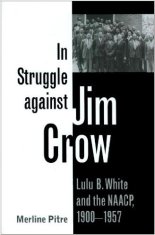 Pitre, M. (1999). In Struggle against Jim Crow: Lulu B. White and the NAACP, 1900-1957. College Station, TX: Texas A&M University Press.
Pitre, M. (1999). In Struggle against Jim Crow: Lulu B. White and the NAACP, 1900-1957. College Station, TX: Texas A&M University Press.
African American women have played significant roles in the ongoing struggle for freedom and equality, but relatively little is known about many of these leaders and activists. Most accounts of the civil rights movement focus on male leaders and the organizations they led, leaving a dearth of information about the countless black women who were the backbone of the struggle in local communities across the country. At the local level women helped mold and shape the direction the movement would take. Lulu B. White was one of those women in the civil rights movement in Texas.
Executive secretary of the Houston branch of the NAACP and state director of branches, White was a significant force in the struggle against Jim Crow during the 1940s and 1950s. She was at the helm of the Houston chapter when the Supreme Court struck down the white primary in Smith v. Allbright, and she led the fight to get more blacks elected to public office, to gain economic parity for African Americans, and to integrate the University of Texas. Author Merline Pitre places White in her proper perspective in Texas, Southern, African American, women’s, and general American history; points to White’s successes and achievements, as well as the problems and conflicts she faced in efforts to eradicate segregation; and looks at the strategies and techniques White used in her leadership roles. Pitre effectively places White within the context of twentieth-century Houston and the civil rights movement that was gripping the state. In Struggle Against Jim Crow is pertinent to the understanding of race, gender, interest group politics, and social reform during this turbulent era.
 Pratt, Joseph: (Multiple published works)
Pratt, Joseph: (Multiple published works)
Pratt is a recently retired historian from the University of Houston. He has written multiple books that focus primarily on energy history and the history of the Houston region:
“The most recent of these are Voice of the Marketplace (2002), a history of the National Petroleum Council, and Prelude to Merger (2000), a history of the Amoco Corporation from 1973-1998. Other oil and gas related books include Offshore Pioneers (1997), a history of the offshore construction work of Brown & Root, From Texas to the East (1993), a strategic history of Texas Eastern Corporation, and The Growth of a Refining Region (1980), an overview of the impact of the refining industry on the Texas-Louisiana Gulf coast. I have also written histories of several other Houston-area organizations (Texas Commerce banks and Baker & Botts law firm), a history of Consolidated Edison of New York City, a dual biography of Houston businessmen Herman and George R. Brown (Builders), and a general history of U.S. business and public policy (The Rise of the Corporate Commonwealth). Click here for the Japanese version.
My current research is on the history of the offshore petroleum industry.”
—
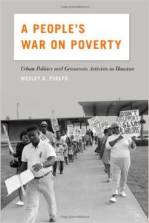 Phelps, W. G. (2014). A People’s War on Poverty: Urban Politics and Grassroots Activists in Houston. Athens: University of Georgia Press.
Phelps, W. G. (2014). A People’s War on Poverty: Urban Politics and Grassroots Activists in Houston. Athens: University of Georgia Press.
“In A People’s War on Poverty, Wesley G. Phelps investigates the on-the-ground implementation of President Lyndon Johnson’s War on Poverty during the 1960s and 1970s. He argues that the fluid interaction between federal policies, urban politics, and grassroots activists created a significant site of conflict over the meaning of American democracy and the rights of citizenship that historians have largely overlooked. In Houston in particular, the War on Poverty spawned fierce political battles that revealed fundamental disagreements over what democracy meant, how far it should extend, and who should benefit from it. Many of the program’s implementers took seriously the federal mandate to empower the poor as they pushed for a more participatory form of democracy that would include more citizens in the political, cultural, and economic life of the city.
At the center of this book are the vitally important but virtually forgotten grassroots activists who administered federal War on Poverty programs, including church ministers, federal program volunteers, students, local administrators, civil rights activists, and the poor themselves. The moderate Great Society liberalism that motivated the architects of the federal programs certainly galvanized local antipoverty activists in Houston. However, their antipoverty philosophy was driven further by prophetic religious traditions and visions of participatory democracy and community organizing championed by the New Left and iconoclastic figures like Saul Alinsky. By focusing on these local actors, Phelps shows that grassroots activists in Houston were influenced by a much more diverse set of intellectual and political traditions, fueling their efforts to expand the meaning of democracy. Ultimately, this episode in Houston’s history reveals both the possibilities and the limits of urban democracy in the twentieth century.”
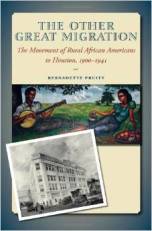 Pruitt, B. (2013). The Other Great Migration: The Movement of Rural African Americans to Houston, 1900-1941.
Pruitt, B. (2013). The Other Great Migration: The Movement of Rural African Americans to Houston, 1900-1941.
“The twentieth century has seen two great waves of African American migration from rural areas into the city, changing not only the country’s demographics but also black culture. In her thorough study of migration to Houston, Bernadette Pruitt portrays the move from rural to urban homes in Jim Crow Houston as a form of black activism and resistance to racism.
Between 1900 and 1950 nearly fifty thousand blacks left their rural communities and small towns in Texas and Louisiana for Houston. Jim Crow proscription, disfranchisement, acts of violence and brutality, and rural poverty pushed them from their homes; the lure of social advancement and prosperity based on urban-industrial development drew them. Houston’s close proximity to basic minerals, innovations in transportation, increased trade, augmented economic revenue, and industrial development prompted white families, commercial businesses, and industries near the Houston Ship Channel to recruit blacks and other immigrants to the city as domestic laborers and wage earners.
Using census data, manuscript collections, government records, and oral history interviews, Pruitt details who the migrants were, why they embarked on their journeys to Houston, the migration networks on which they relied, the jobs they held, the neighborhoods into which they settled, the culture and institutions they transplanted into the city, and the communities and people they transformed in Houston.”
Roth, M. and T. Kennedy. (2012). Houston Blue: The Story of the Houston Police Department. Denton, TX: University of North Texas Press.
“Houston Blue offers the first comprehensive history of one of the nation’s largest police forces, the Houston Police Department. Through extensive archival research and more than one hundred interviews with prominent Houston police figures, politicians, news reporters, attorneys, and others, authors Mitchel P. Roth and Tom Kennedy chronicle the development of policing in the Bayou City from its days as a grimy trading post in the 1830s to its current status as the nation’s fourth largest city. Combining the skills of historian, criminologist, and journalist, Roth and Kennedy reconstruct the history of a police force that has been both innovative and controversial.”
San Miguel, G. (2001). Brown, Not White: School Integration and the Chicano Movement in Houston. College Station: Texas A&M University Press.
“Strikes, boycotts, rallies, negotiations, and litigation marked the efforts of Mexican-origin community members to achieve educational opportunity and oppose discrimination in Houston schools in the early 1970s. These responses were sparked by the effort of the Houston Independent School District to circumvent a court order for desegregation by classifying Mexican American children as “white” and integrating them with African American children—leaving Anglos in segregated schools. Gaining legal recognition for Mexican Americans as a minority group became the only means for fighting this kind of discrimination…The struggle for legal recognition not only reflected an upsurge in organizing within the community but also generated a shift in consciousness and identity. In Brown, Not White Guadalupe San Miguel, Jr., astutely traces the evolution of the community’s political activism in education during the Chicano Movement era of the early 1970s.
San Miguel also identifies the important implications of this struggle for Mexican Americans and for public education. First, he demonstrates, the political mobilization in Houston underscored the emergence of a new type of grassroots ethnic leadership committed to community empowerment and to inclusiveness of diverse ideological interests within the minority community. Second, it signaled a shift in the activist community’s identity from the assimilationist “Mexican American Generation” to the rising Chicano Movement with its “nationalist” ideology. Finally, it introduced Mexican American interests into educational policy making in general and into the national desegregation struggles in particular. This important study will engage those interested in public school policy, as well as scholars of Mexican American history and the history of desegregation in America.”

Scardino, B. W. Stern, B.C. Webb, and P.G. Rowe (Eds). (2003). Ephemeral City: Cite Looks at Houston.
This book has fantastic photos of the city architecture.
“Built around characteristic features of modern life such as rapid change, built-in obsolescence, indeterminacy, media orientation, a culture of style, and instant gratification, Houston is an ephemeral city, hard to pin down and understand. Its lack of zoning (Houston is the only major city in America without it) and a burgeoning population that doubles every generation have created a new urban paradigm, where displacements of traditional patterns of stability and urban ritual are now the norm. Since 1982, “Cite: The Architectural and Design Review of Houston” has explored the nature of Houston’s evolution as an urban place by publishing commissioned articles by nationally known writers and architectural historians and high quality photography. This volume brings together twenty-five exceptional articles from Cite’s first twenty years, along with 224 black-and-white photographs, maps, and plans.The book is divided into three sections: ‘Idea of the City’, edited by Bruce C. Webb, ‘Places of the City’, edited by Barrie Scardino, and ‘Buildings of the City’, edited by William F. Stern. The sections are introduced with new essays written by the editors to provide cohesion for the anthology and commentary on where Houston might be going in the twenty-first century. Most articles are followed by a brief update and bibliography of related articles published in Cite. The editors chose these articles to explore the developmental history and architecture of a flat, sprawling, free-spirited city that is impossible to capture through any one episode or explain through any one place. With a diversity of voices and a selection that includes both narrow and broad topics, the volume constitutes a collage that captures the essence of a remarkable place – inchoate, patchwork, full of youthful vigor, favorable to private enterprise, and one of the world’s most fascinating cities.”
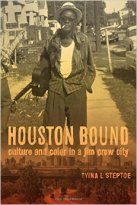
Steptoe, T.L. (2016). Houston Bound: Culture and Color in a Jim Crow City. Berkeley, CA: University of California Press.
Beginning after World War I, Houston was transformed from a black-and-white frontier town into one of the most ethnically and racially diverse urban areas in the United States. Houston Bound draws on social and cultural history to show how, despite Anglo attempts to fix racial categories through Jim Crow laws, converging migrations—particularly those of Mexicans and Creoles—complicated ideas of blackness and whiteness and introduced different understandings about race. This migration history also uses music and sound to examine these racial complexities, tracing the emergence of Houston’s blues and jazz scenes in the 1920s as well as the hybrid forms of these genres that arose when migrants forged shared social space and carved out new communities and politics. This interdisciplinary book provides both an innovative historiography about migration and immigration in the twentieth century and a critical examination of a city located in the former Confederacy.
Thesis, D. (2011). Literary Houston. TCU Press.
“The fifth in the “Literary Cities” series, Literary Houston gathers together historical and contemporary writing about this Texas city that everyone loves to hate. Rather than organize the pieces chronologically, Editor David Theis has assembled works according to themes such as biography and memoir; visitors; the city itself; events; poetry; and fiction. From Cabeza de Vaca’s early experiences to the Enron debacle, Theis presents Houston in a new, critical light.”
—-
Valenzuela, A. (1999). Substractive Schooling: U.S.-Mexican Youth and the Politics of Caring. Albany: SUNY University Press.
A canonical book in education: “Subtractive Schooling provides a framework for understanding the patterns of immigrant achievement and U.S.-born underachievement frequently noted in the literature and observed by the author in her ethnographic account of regular-track youth attending a comprehensive, virtually all-Mexican, inner-city high school in Houston. Valenzuela argues that schools subtract resources from youth in two major ways: firstly by dismissing their definition of education and secondly, through assimilationist policies and practices that minimize their culture and language. A key consequence is the erosion of students’ social capital evident in the absence of academically-oriented networks among acculturated, U.S.-born youth.”
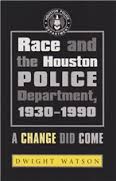
Watson, D. (2005). Race and the Houston Police Department, 1930-1990: A Change Did Come. College Station: Texas A&M University Press.
“Dwight Watson traces how the Houston Police Department reacted to social, political, and institutional change over a fifty-year period—and specifically, how it responded to and in turn influenced racial change. Using police records as well as contemporary accounts, Watson astutely analyzes the escalating strains between the police and segments of the city’s black population in the 1967 police riot at Texas Southern University and the 1971 violence that became known as the Dowling Street Shoot-Out. The police reacted to these events and to daily challenges by hardening its resolve to impose its will on the minority community. Watson’s study demonstrates vividly how race complicated the internal impulses for change and gave way through time to external pressures—including the Civil Rights Movement, modernization, annexations, and court-ordered redistricting—for institutional changes within the department. His work illuminates not only the role of a southern police department in racial change but also the internal dynamics of change in an organization designed to protect the status quo.”
 Wood, R. and J. Fraher (2003). Down in Houston: Bayou City Blues. Austin: University of Texas Press.
Wood, R. and J. Fraher (2003). Down in Houston: Bayou City Blues. Austin: University of Texas Press.
“In the clubs, ballrooms, and barbecue joints of neighborhoods such as Third Ward, Frenchtown, Sunnyside, and Double Bayou, Houston’s African American community birthed a vibrant and unique slice of the blues. Ranging from the down-home sounds of Lightnin’ Hopkins to the more refined orchestrations of the Duke-Peacock recording empire and beyond, Houston blues was and is the voice of a working-class community, an ongoing conversation about good times and hard times, smokin’ Saturday nights and Blue Mondays. Since 1995, Roger Wood and James Fraher have been gathering the story of the blues in Houston. In this book, they draw on dozens of interviews with blues musicians, club owners, audience members, and music producers, as well as dramatic black-and-white photographs of performers and venues, to present a lovingly detailed portrait of the Houston blues scene, past and present. Going back to the early days with Lightnin’ Hopkins, they follow the blues from the streets of Houston’s third and fifth wards to its impact on the wider American blues scene. Along the way, they remember the vigorous blues community that sprang up after World War II, mourn its decline in the Civil Rights era, and celebrate the lively, if sometimes overlooked, blues culture that still calls Houston home. Wood and Fraher conclude the book with an unforgettable reunion of Houston blues legends that they held on January 3, 1998.”
 Writers’ Program of the Work Projects Administration in the State of Texas. (1942). Houston: A History and Guide.
Writers’ Program of the Work Projects Administration in the State of Texas. (1942). Houston: A History and Guide.
An older history of Houston from the WPA. Available for free online here. Referred to me by Jim Parsons in the comment section, who wrote: “A favorite Houston book of mine is “Houston: A Complete History,” the 1942 WPA guide to the city. It is definitely a period piece in some ways, but as a readable history of the city and a snapshot of life at a particular time, it’s fantastic. Even better, it’s available for free online.”
—
—-
Graphic Novels:
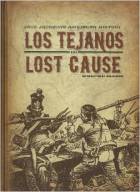 Jack Jackson’s American History: Los Tejanos and Lost Cause
Jack Jackson’s American History: Los Tejanos and Lost Cause
“Los Tejanos is the story of the Texas-Mexican conflict between 1835 and 1875 as seen through the eyes of tejano (literally Texan of Mexican, as distinct from anglo, heritage) Juan Seguín. It is through Seguín, a pivotal and tragic figure, that Jackson humanizes Texas’ fight for independence and provides a human scale for this vast and complex story. Lost Cause documents the violent reaction to Reconstruction by Texans. As Jackson wrote, “Texas reaped a bitter harvest from the War Between the States. Part of this dark legacy was the great unrest that plagued the beaten but unbowed populace.” The tensions caused by Reconstruction are told through the Taylor-Sutton feud, which raged across South Texas, embracing two generations and causing untold grief, and the gunslinger John Wesley Hardin, who swept across Texas killing Carpetbaggers, Federal soldiers, and Indians. Jackson’s work is as known for its rigorous research — he became as good an historian as he was a cartoonist — as well as its chiseled, raw-boned visual approach, reproducing the time and place with an uncanny verisimilitude. This edition includes an essay by and interview with Jackson about the controversy Lost Cause generated, and an introduction by the novelist Ron Hansen.”

Long, M., J. Demonakos, N. Powell. (2012). The Silence of Our Friends. New York: First Second.
“As the civil rights struggle heats up in Texas, two [Houston] families-one white, one black-find common ground. This semi-autobiographical tale is set in 1967 Texas, against the backdrop of the fight for civil rights. A white family from a notoriously racist neighborhood in the suburbs and a black family from its poorest ward cross Houston’s color line, overcoming humiliation, degradation, and violence to win the freedom of five black college students unjustly charged with the murder of a policeman. The Silence of Our Friends follows events through the point of view of young Mark Long, whose father is a reporter covering the story. Semi-fictionalized, this story has its roots solidly in very real events. With art from the brilliant Nate Powell (Swallow Me Whole) bringing the tale to heart-wrenching life,The Silence of Our Friends is a new and important entry in the body of civil rights literature.
Videos:
Vice TV’s “Screwed in Houston” focuses on the city’s hip hop culture. (Part 1 below, other parts also available on Youtube though.)
Frontline’s “Dropout Nation” offers a portrait of Sharpstown High School students, the problem with dropout, and the work of educators to try and help them graduate. Trailer below, but you can watch the full documentary and access their extra resources about it here.
Houston “Waterfront City”: Pretty standard Discovery Channel documentary about the city
“Third Ward Texas”… Documentary about Project Row Houses (Trailer Below, Learn more here)
Drugs Inc “High in Houston” (National Geographic Program about Drugs in the Fifth Ward)
“This is Our Home and It Is Not For Sale”(1987, Directed by Jon Schwartz) “This Is Our Home, It Is Not For Sale is the 60-year history of an archetypal American neighborhood, Riverside in Houston, Texas, which experienced the classic syndrome of integration, real estate blockbusting, white flight, and regentrification common to virtually every American city.
The film’s title comes from that era of racial transition when whites, pressed by real estate agents to sell to blacks, prominently displayed signs proclaiming: “This Is Our Home, It Is Not For Sale”–words that would be swallowed in almost every case as white owners stampeded and property values collapsed. Years later, that dictum remained just as timely and relevant to Riverside’s affluent black community as they continued to protest various social and institutional encroachments into the area.”
Berman, David, Thomas R Cole, and California Newsreel (Film). The Strange Demise of Jim Crow How Houston Desegregated Its Public Accommodations, 1959-1963. San Francisco, CA: California Newsreel, 1997.
Houston-based Resources and Archives:
African-American Library at the Gregory School: “The African American Library at the Gregory School officially opened its doors on Saturday, November 14, 2009. Located in the historic Freeman’s Town at 1300 Victor St., Houston, TX 77019, the library is housed in the Edgar M. Gregory School, which served as the first public school for African Americans in Houston. The first library of its kind in Houston and one of the few African American libraries in the country, the Gregory School serves as a resource to preserve, promote, and celebrate the rich history and culture of African Americans in Houston, the surrounding region, and the African Diaspora. This historic building was reconditioned to serve as a repository for use by historians, researchers, and general public. The African American Library at the Gregory School is the newest of three special collections operated by the Houston Public library. The library provides incomparable collections of multi-type resources including reference books, rare books, archival materials, exhibits, artifacts, oral histories, and innovative programs. With community participation, this facility is expected to become one-of-a-kind research and cultural center, providing valuable information to the Houston community and the entire world.”
Houston History (Journal): The Center of Public History program at University of Houston also has a journal on Houston History that has published a lot of work on Houston. In fact they have just celebrated their 30th anniversary.
Houston Public Library-Downtown: The Public Library has a significant archive of Houston materials.
Hip Hop Collections (University of Houston Library): The Houston Hip Hop collections document the unique music and culture of Houston hip hop. Among their riches are approximately 1500 vinyl records owned by DJ Screw, originator of the “chopped and screwed” genre, as well as related photographs and artifacts. Other materials include lyrics and photographs of the rapper HAWK, audio and promotional materials from other Houston artists, and the creative products of Pen & Pixel Graphics, Inc. and Samplified Digital Recording Studios.
Center for Public History (UH): As a commenter alerted me, the Center did a lot of oral histories of movers and shakers in Houston before they died. The should be archived at the University of Houston library.
Texas Southern University Library: TSU’s library should also have archival material about Houston’s black community.
Smith, C. S. Race Riot, Houston, Texas, August 23, 1917. [Detroit, Mich.]: [Smith], 1917.: My sense is that this is a personal blog, but it has a useful list of resources about race riots in 1917.
—–
Academic Journal Articles:
**(if you don’t have access to academic journals, feel free to get in touch with me and I will try to share a copy of the article when possible)
Baker, Andrew C. (July 2014). From Rural South to Metropolitan Sunbelt: Creating a Cowboy Identity in the Shadow of Houston. Southwestern Historical Quarterly. 118 (1): 1–22.
Banta, R.Mm, C.J. Senff, J. Nielsen-Gammon, L.S. Darby, T.B. Ryerson, R.J. Alvarez, S.P. Sandberg, E.J. Williams, and M. Trainer. (2005). A Bad Air Day In Houston: A case study from the Texas Air Quality Study 2000 field campaign in Houston illustrates the role of small-scale meteorological processes in producing high-pollution events.
Bell, D.C., JW. Carlson, and A.J. Richard. (1998). The Social Ecology of Drug Use: A Factor Analysis of an Urban Environment. 33(11): 2201-2217.
Block, Robinson. (2010). Afro-Americans for Black Liberation and the Fight for Civil Rights at the University of Houston. Houston History. 8(1): 24–28.
Bright, S.B. (YEAR). The Failure to Achieve Fairness: Race and Poverty Continue to Influence Who Dies. Journal of Constitutional Law.11(1): 23-38).
Bullard, R. (2007). Solid Waste Sites and the Black Houston Community. Sociological Inquiry. 53(2-3): 273-288.
Bullard, R. (1991). Housing problems and prospects for blacks in Houston. The Review of Black Political Economy. 19(3-4): 175-194.
Bush, W.S. (2004). (DISSERTATION). Representing the Juvenile Delinquent: Reform, Social Science, and Teenage Troubles in Postwar Texas.
Calbillo, Carlos. (2011). The Chicano Movement in Houston and Texas: A Personal Memory.” Houston History. 9(1): 25–29.
Calhoun, Claudia. (2015). Where Houston Met Hollywood: Giant, Glenn McCarthy, and the Construction of a Modern City. Journal of Urban History. 41(3): 404–19.
Cano, G. (2004). The Virgin, the Priest, and the Flag: Political Mobilization of Mexican Immigrants in Chicago, Houston, and New York.
Carrasco, C.L. (2003). (MASTERS THESIS) Urban Ethnic Mosaics: An Analysis of Community Perspectives in Third Ward, Houston, Texas.
Cepeda, A., A. Valdez, C. Kaplan, and L. Hill. (2010). Patterns of Substance use among Hurrican Katrina evacuees in Houston, Texas. Disasters. 34(2): 426-446.
Derossett, D.L. (2014). Free markets and foreclosures: An examination of contradictions in neoliberal urbanization in Houston, Texas. Cities.
Esparza, Jesus Jesse. ( 2011). La Colonia Mexicana: A History of Mexican Americans in Houston. Houston History. 9(1): 2–8.
Feagin, J.R. (2009). The secondary circuit of capital: office construction in Houston, Texas. International Journal of Urban and Regional Research. 11(2): 172-192.
Feagin, J.R. (2009). The secondary circuit of capital: office construction in Houston, Texas. International Journal of Urban and Regional Research. 11(2): 172-192.
Feagin, J.R. (1984). The role of the state in urban development: the case of Houston, Texas. Environment and Planning D: Society and Space. 2(4): 447-460.
Fifer McIntosh, M. (2008). Measuring the Labor Market Impacts of Hurricane Katrina Migration: Evidence from Houston, Texas. The American Economic Review. 98(2): 54-57.
Fisher, R. (1989). Urban Policy in Houston, Texas. Urban Studies. 26: 144-154.
Frey, W.H. and K. Liaw. (1998). Immigrant Concentration and Domestic Migrant Dispersal: Is Movement to Nonmetropolitan Areas “White Flight”? Professional Geographer.50(2): 215-232.
Garrison Marks, John. (2014). Community Bonds in the Bayou City: Free Blacks and Local Reputation in Early Houston. Southwestern Historical Quarterly. 117(3): 266–82.
Henthorn, T. C. (2015). Building a Moral Metropolis: Philanthropy and City Building in Houston, Texas. Journal of Urban History.
Holmes, A. and J.F. James. (1995). Discrimination, Lending Practices and Housing Values: Preliminary Evidence from the Houston Market. The Journal of Real Estate Research.
Jackson, Chuck. “What Blooms: The Jailhouse, Inside Out,” in Studies in Law, Politics, and Society (Spec. Issue on The Beautiful Prison). Ed. Austin Sarat. Intro. Doran Larson. 64 (April/May 2014), 87-96.
Jackson, Chuck. “What Looms: The University, the Jailhouse, and Pedagogy,” Pedagogy: Critical Approaches to Teaching Literature, Language, Composition, and Culture, 9.2 (Spring 2009), 315-324.
Kirby, A. and A.K. Lynch. (1987). A ghost in the growth machine: the aftermath of rapid population growth in Houston. Urban Studies.24: 587-596.
Lang, N.G. (1989). AIDS, gays and the ballot box: The politics of disease in Houston, Texas. Medical Anthropology: Cross-Cultural Studies in Health and Illness. 10(2-3): 203-209.
La Vigne, N., L.E. Brooks, T.L. Shollenberger. (2009). Women on the Outside: Understanding the Experiences of Female Prisoners Returning to Houston, Texas. Urban Institute Justice Policy Center.
Lee, E. B., L. A. Browne, and J.W. Ward. Local Newspapers and the Houston Public School Desegregation, 1954-1984. S.l.: s.n.] ;, 2010.
Lin, J. (2005). Ethnic places, postmodernism, and urban change in Houston. The Sociological Quarterly.36(4): 629-647.
Longoria, R. and S. Rogers. (2013). Exodus within an expanding city: The case of Houston’s historic African-American communities. Urban Design International.18: 24-42.
Malone, C.K. (2007). Unannounced and Unexpected: The Desegregation of Houston Public Library in the Early 1950s. Library Trends. 55(3): 665-674.
Marquez, J.D. (1011). The browning of Black politics: Foundational Blackness and new Latino subjectivities. Subjectivity.4: 47-67.
McDavid, C. (2011). When is “Gone” Gone? Archaeology, Gentrification, and Competing Narratives about Freedman’s Town, Houston. Historical Archaeologies of Poverty.45(3): 74-88.
McDavid, C. (2006). The Power of a Name: Reclaiming Heritage in Freedmen’s Town, Houston, Texas. African Diaspora Archaeology Newsletter.9(1).
McDavid, C., D. Bruner, and R. Marcom. (2008). Urban Archeology and the Pressures of Gentrification: Claiming, Naming, and Negotiating “Freedom” in Freedmen’s Town, Houston. Bulletin of the Texas Archeological Society.79: 37-52.
McNeil, L. and A. Valenzuela. The Harmful Impact of the TAAS System of Testing in Texas: Beneath the Accountability Rhetoric.
McWhorter, T. (2011). Trailblazers in Houston’s East End: The Impact of Ripley House and the Settlement Association on Houston’s Hispanic Population. Houston History. 9(1): 9-13.
McWhorter, T. (2010). From Das Zweiter to El Segundo: A Brief History of Houston’s Second Ward. Houston History. 8(1): 38-42.
Mieszkowski, P. and B. Smith. (1991). Analyzing urban decentralization: The case of Houston. Regional Science and Urban Economic. 21(2): 183-199.
Montz, Z.A. (2013). (DISSERTATION). “Negro Laborers to the Crossroads:” Organized Labor and the Traditions of Black Unionism in Houston, Texas, 1935-1964.
Nicholson-Preuss, M.L. (2010). (DISSERTATION). Down and Out in Old J D: Urban Public Hospitals, Institutional Stigma and Medical Indigence in the Twentieth Century. (Focused on indigent healthcare and public hospitals in Houston, specifically Jefferson Davis Hospital and the controversies surrounding its funding. There is a hard copy at the Metropolitan Research Center at the Houston Library and its available from the University of Houston via ProQuest.
Norris, D. (2009-2010). Houston Gentrification: Options for Current Residents of Third Ward. T. Marshall L. Review.
Oliver Rogers, G. and S. SukoIratanametee. (2009). Neighborhood design and sense of community: Comparing suburban neighborhoods in Houston Texas. Landscape and Urban Planning. 92: 325-334.
Olson, F. (THESIS). Social Constructionism in Community Development in the Spring Branch, Memorial Community of Houston, Texas.
Pando, P. (Summer 2011). When There Were Wards: A Series IN THE NICKEL, HOUSTON’S FIFTH WARD.” Houston History 8, no. 3 (Summer 2011): 33–37.
Pegoda, A. J. (2010). The University of Houston and Texas Southern University: Perpetuating ‘Separate but Equal’ in the Face of Brown v. Board of Education. Houston History. 8(1): 19-23.
Peiser, R.B. (2003). Land Development Regulation: A Case Study of Dallas and Houston, Texas. Real Estate Economics. 9(4): 397-417.
Pit, C. (2011). (DISSERTATION). Deal with us: The business of Mexican culture in post-World-War II Houston.
Pitre, M. “Texas and the Master Civil Rights Narrative: A Case Study of Black Females in Houston.” Southwestern Historical Quarterly, no. 116 (October 2012): 124–37.
Podagrosi, A. (YEAR). Gentrification and the Influence of Local Government in the Physical and Social Upgrading of Houston.
Podagrosi, A., I. Vojnovic, and B. Pigozzi. (2011). The diversity of gentrification in Houston’s urban renaissance: from cleansing the urban poor to supergentrification. Environment and Planning A. 43: 1910-1929.
Podagrosi, A. and I. Vojnovic. (2008). Tearing Down Freeman’s Town and African American Displacement in Houston: The Good, the Bad, and the Ugly of Urban Revival. Urban Geography.29(4): 371-401.
Pruitt, B. (1991). The Urban Transformation of the MacGregor Area in Houston, Texas, 1950-70.
Qian, Z. (2011). Shaping Urban Form without Zoning: Investigating Three Neighbourhoods in Houston. Planning Practice and Research. 26(1): 21-42.
Qian, Z. (2010). Without zoning: Urban development and land use controls in Houston. Cities.27(1): 31-41.
Quraishi, U. (2013). (DISSERTATION). Multiple Mobilities: Race, Capital, and South Asian Migrations to and Through Houston.
Raymond, M., S.H. Fletcher, J. Luque. (2001). Teach for America: An Evaluation of Teacher Differences and Student Outcomes in Houston, Texas.
Rose, L.S., H. Akbrai, and H. Taha. (2003). Characterizing the Fabric of the Urban Environment: A Case Study of Greater Houston, Texas.
Rosin, Jan Swellander. (Fall 2005). “The New Latinos and Houston’s Global Pueblo.” Houston History Magazine. 20.
Ross-Nazzal, J. (2008). The Right Place Houston Makes History. Houston History. 6(1): 4-11.
Selley, M.G. (2011). House Special: Mexican Food & Houston Politics. Houston History. 9(1): 30-35.
Shelton, J.E. and M.N. Coleman. (2009). After the Storm: How Race, Class, and Immigration Concerns Influenced Beliefs About the Katrina Evacuees. Social Science Quarterly.90(3): 480-496.
Shelton, K. (2012). Culture War in Downtown Houston: Jones Hall and the Postwar Battle over Exclusive Space. Southwestern Historical Quarterly. 116(1): 1-24.
Sheridan, J.T. (YEAR). Invisible Houston: Recording Oral Histories with Middle School Students.
SoRelle, J.M. (1980). (DISSERTATION). The darker side of ‘Heaven’: the black community in Houston, Texas, 1917-1945.
Steptoe, Tyina L. (2008). (DISSERTATION). Dixie West: Race, Migration, and the Color Lines in Jim Crow Houston.
Vojnovic, I. (2003). Governance in Houston: Growth Theories and Urban Pressures. Journal of Urban Affairs.25(5): 589-624.
Vu, R. (2013). ‘Natives of a Ghost Country: The Vietnamese in Houston and Their Construction of a Postwar Community’ in J. Desai and K.Y. Joshi (Eds.), Asian Americans in Dixie: Race and Migration in the South. 165-189.
Yandle, T. and D. Burton. (1996). Reexamining Environmental Justice: A Statistical Analysis of Historical Hazardous Waste Landfil Siting Patterns in Metropolitan Texas. Social Science Quarterly. 77(3): 477-492.
—
—
Non-peer reviewed articles that are good/useful (ordered from most recent):
Steptoe, T. (December 14, 2015). ‘Creole’ in Houston: Not Black, Not White, Different than ‘Mixed’. Houston Chronicle.
Swartz, M. (October 2015). Green Acres. Texas Monthly. (Offers a good description of Houston’s “green makeover” and the development of city parks).
Hinchliffe, E. and B. Rogers. (October 8, 2015). Judge orders closure of troubled Crestmont Village apartments. Houston Chronicle.
Lomax, J.N. (October 1, 2015). Houston’s Real Estate Market Feeling the Effects of Oil’s Price Drop. Texas Monthly. (“Don’t be fooled by claims of economic diversification–the city still runs on oil.”)
Holeywell, R. (September 16, 2015). What maps reveal about Houston’s health problems. Urban Edge.
Holeywell, R. (September 11, 2015). Why Residents Have Nuanced Views of Gentrification. Urban Edge.
Holeywell, R. (September 8, 2015). Forget What You’ve Heard, Houston Really Does Have Zoning (Sort Of). The Urban Edge.
Klineberg, S. (August 26, 2015). Four Myths About Katrina’s Impact on Houston. Urban Edge.
Holeywell, R. (August 25, 2015). No, Katrina Evacuees Didn’t Cause a Houston Crime Wave. Urban Edge.
Tatke, S. (August 13, 2015). Carless in Houston. Texas Monthly. (“The heretical choice to not own a vehicle in a city that worships the automobile”.)
Holeywell, R. (July 30, 2015). The troubling ways wealthy parents pick schools. Urban Edge.
Lomax, J.N. (July 27, 2015). From Texas to Cuba: An Epic Road Trip, Castro’s Trip to Houston, and How It’s Changed. Texas Monthly. (“As the doors to Cuban travel slowly re-open, the author’s dad recalls his epic road/cruise ship trip to Havana just before Castro’s take-over, and we remember Castro’s hero’s welcome in Houston a few months later.”)
Graham, D. (July 21, 2015). Sandra Bland and the Long History of Racism in Waller County, Texas. The Atlantic.
Lane, C. (June 29, 2015). Gentrification in Houston: Does it Ruin Neighborhoods? Houston Press.
Shelton, K., K. Douds, and J. Wu. (June 29, 2015). Surveys show Houstonians’ long-running love-hate relationship with transit. Urban Edge.
Cramptom, Liz. (June 25, 2015). “Supreme Court: Texas Reinforced Segregated Housing.” The Texas Tribune.
Llamas, J. (June 25, 2015). A closer look at criticism of Houston’s “transit deserts”. Urban Edge.
Holeywell, R. (June 24, 2015). Houston’s office boom is just about over. Urban Edge.
KTRK. (May 7, 2016). “ABC13 Archive: Newscast from Moody Park Riot of 1978.” ABC13 Houston.
Payne, M. (June 22, 2015). Houston cyclists keep getting killed and they don’t have to. Urban Edge.
Shelton, K. (June 9, 2015). Demand, supply, gap: Transit deserts in Houston. Urban Edge.
Levin, M. (May 1, 2015). Houston is both one of the most diverse and most segregated US cities. Houston Chronicle.
Shelton, K. (March 31, 2015). Should Minority Houstonians be Moving to Newer Suburbs? Urban Edge.
Shelton, K., K. Douds, and J. Wu. (JuThompson, D. (March 26, 2015). Americans Love Big Hot Suburbs. The Atlantic. (Describes population growth in Houston, Austin, Dallas).
O’Connell, H. (March 24, 2015). Connecting Job Proximity and Gentrificaiton: What’s going on Houston? Urban Edge.
Shelton, K. (March 17, 2015). So there’s good news and bad news about income inequality in Houston. Urban Edge.
Lomax, J.N. (March 12, 2015). Three Pies in the Houston Skies. Texas Monthly. (The author discusses why Houston Redditors ideas for changing Houston are cool but unrealistic.)
Solomon, D. (February 25, 2015). Houston and Austin Had Two of the Biggest Rent Hikes in the Past Year of Any City in the Country. Texas Monthly.
Smothers, H. (January 21, 2015). Houston’s Equal Rights Ordinance, Explained. Texas Monthly.
Solomon, D. (July 23, 2014). Do Millennials Prefer Houston and San Antonio to Dallas and Austin? Texas Monthly.
Holeywell, R. (May 13, 2015). HISD opens massive school district data sets to researchers. Urban Edge.
Hlavaty, C. (June 8, 2014). Beltway 8 vs. Huge Land Formations: Mapping Tool Lets You Realize Its Enormity.” Houston Chronicle. Solomon, D. (April 30, 2014). As If You Needed It, Further Proof That Houston Is So Much Bigger Than Most Cities. Texas Monthly. (The article overlays maps of other cities and Houston to compare).
Florida, R. (October, 2013). The Boom Towns and Ghost Towns of the New Economy. The Atlantic. (“New York, Houston, Washington, D.C.–plus college towns and the energy belt–are all up, while much of the Sun Belt is (still) down. Mapping the winners and losers since the crash.”)
Holeywell, R. (October, 2013). Houston: The Surprising Contenter in America’s Urban Revival. Governing. (“Even the country’s most sprawling, least dense, most automobile-dependent city in America is trying to adapt to people’s preference for urban living.”)
Thompson, D. (May 28, 2013). Houston is Unstoppable: Why Texas’ Juggernaut Is America’s #1 Job Creator. The Atlantic.
Swartz, M. (February, 2009). Downsizing Houston. Texas Monthly. (“If the crash that followed the boom hasn’t exactly been our fault, the result has been the same sad sense that maybe we’ll never have fun again.”
Burka, P. (November 16, 2007). The Future of Houston. Texas Monthly. (The article sums up research presented by a sociologist and J.P. Morgan Chase chairman about changes in Houston.)
—
Other Texas Books (Some have sections about Houston specifically):
Clayson, W.S. (2010). Freedom is Not Enough: The War on Poverty and the Civil Rights Movement in Texas. Austin: University of Texas Press.
Cullen, D.O. and K.G. Wilkinson (Eds.). (2010). The Texas Left: The Radical Roots of Lone Star Liberalism. College Station: Texas A&M University Press.
Foley, D., C. Mota, D. Post, and I. Lozano. (1977). From Peones to Politics: Ethnic Relations in a South Texas Town 1900-1977. Austin: University of Texas Center for Mexican American Studies.
Hubner, J. (2005). Last Chance in Texas: The Redemption of Criminal Youth. New York: Random House.
Leon, A. (1999). Mexican Americans in Texas: A Brief History (Second Edition). Wheeling: Harlan Davidson.
Macleish, K.T. (2013). Making War at Fort Hood: Life and Uncertainty in a Military Community. Princeton: Princeton University Press.
Miller, C. and H. Sanders (Eds.). (1990). Urban Texas: Politics and Development. College Station: Texas A&M University Press.
Perkinson, R. (2010). Texas Tough: The Rise of America’s Prison Empire. New York: Metropolitan Books.
Valencia, R. (2008). Chicano Students and the Courts: The Mexican American Legal Struggle for Educational Equality. New York: New York University Press.

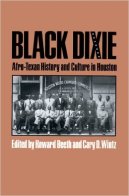
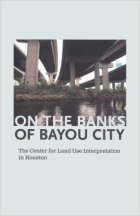
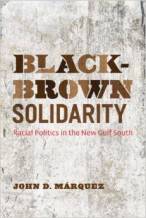
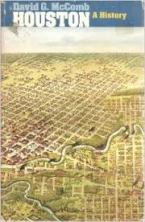
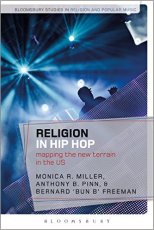
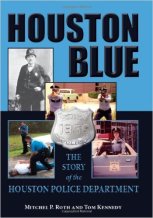
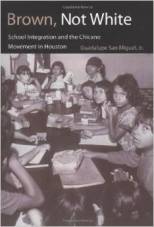
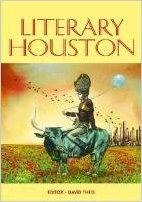
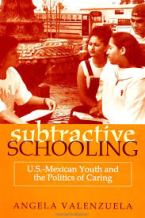
A favorite Houston book of mine is “Houston: A Complete History,” the 1942 WPA guide to the city. It is definitely a period piece in some ways, but as a readable history of the city and a snapshot of life at a particular time, it’s fantastic. Even better, it’s available for free online at https://archive.org/details/houstonahistory00writmiss.
LikeLiked by 1 person
Awesome! Thanks, Jim. I’ll add it up above.
LikeLike
Jenna Christian are you familiar with LITERARY HOUSTON, an anthology of writing about Houston? I edited it. Pub by Tcu Press in 2010. Got reviewed pretty widely, including in some academic journals.
LikeLiked by 1 person
I’m not familiar with it, David, but I’ll check it out. Thanks!
LikeLike
I finally ordered myself a copy of your book today, David. Look forward to checking it out!
LikeLike
I would add: “Unprecedented Power: Jesse Jones, Capitalism, and the Common Good” (2013) by Steven Fenberg
LikeLike
great, will do. thanks!
LikeLike
Seems that the documentary, “This is My House and It’s Not For Sale,” should be on this list too!
LikeLiked by 1 person
Oops. I meant, “This is My Home and It’s Not for Sale.”
LikeLiked by 1 person
Got it wrong again. “This is Our Home and It’s Not for Sale.”
LikeLiked by 1 person
Finally checked out some clips of this movie. It looks fantastic–like something I might like to use with students. Hoping the Houston Public Library has it, because it’s not cheap to buy.
LikeLike
Mari L. Nicholson-Preuss. (2010) Down and Out in Old J D: Urban Public Hospitals, Institutional Stigma and Medical Indigence in the Twentieth Century –My dissertation focused on indigent healthcare and public hospitals in Houston, specifically Jefferson Davis Hospital and the controversies surrounding its funding. I gave a hard copy to the Metropolitan Research Center at the Houston Library and its available from the University of Houston via ProQuest.
LikeLike
This is a fantastic resource!!! Thank you for compiling this list!
LikeLike
Great list! Also look at Joe R. Feagin, Free Enterprise City: Houston in Political and Economic Perspective (Rutgers U. P. 1988)
LikeLike
A lot of material has been generated through the Public History Program at University of Houston under the care of Dr. Joseph Pratt who wrote several books on Houston business and the petroleum industry. He just retired this week. See a list of his books at http://vi.uh.edu/People/Pratt/pratt.html. The Center of Public History program at University of Houston also has a journal on Houston History that has published a lot of work on Houston. In fact they have just celebrated their 30th anniversary. See https://houstonhistorymagazine.org/2015/03/center-for-public-history-30th-anniversary/ for information. There is quite a cadre of Houston historians.
Jan Rosin
LikeLike
Rosin, Jan Swellander. (Fall 2005). “The New Latinos and Houston’s Global Pueblo.” Houston History Magazine. 20.
LikeLike
The downtown Houston Public Library has a significant archive of Houston materials. Also the Center for Public of History did a lot oral histories of the movers and shakers in Houston before they died. I believe they should be archived at the University of Houston library. Be sure to checkout archival materials at Texas Southern University on the black community which is the historically African American university in Houston.
Jan Rosin
LikeLike
This is excellent! Thanks so much for bringing this to my attention Jan. I’ll be sure to add it–and use it! Thanks again.
LikeLike
You could add my recent book The War on Slums in the Southwest that includes Houston as one of the five cities I study.
LikeLike
Fantastic. I definitely will. Thanks, Robert!
LikeLike
Awesome! That looks really interested. I’ve added it to the book list.
LikeLike
The African American Library at the Gregory School is a research for Houston’s African American history. http://www.thegregoryschool.org/
LikeLike
Oh yeah! That’s great. Thanks!
LikeLike
LikeLike
Wow. The “furious tide of juvenile delinquency”!
LikeLike